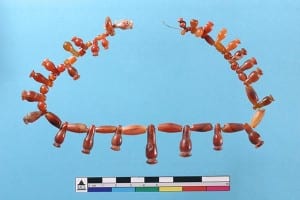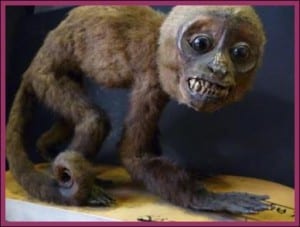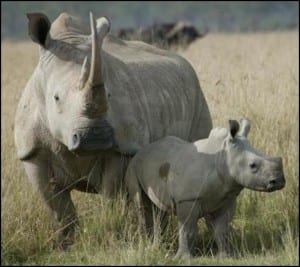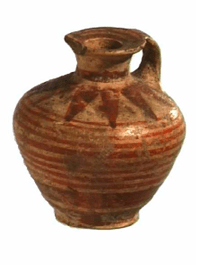Conversation is an art, so they say. How to start a good one with someone you don’t know but want to? How to get going and increase momentum to the point where your partner in art starts butting in, can’t help it, has something they just have to say right now? “The thing is,” they say, “the thing is…” There we’ll leave them for now, in midflow, poised at the point of launching their urgent thoughts at you, about to spin you and them in a whirl of ideas and words.
We’re calling our new outreach experience “The thing is…” I’ve posted before about how we’re working with some excellent designers to create a space in which to engage people in conversations about an object. Recently I’ve been working with our curators to select objects around which we can have conversations with people.
First up is a bead necklace from Petrie’s Palestinian Collection, similar to the one pictured here.

I have a lot to learn about the necklace we’ll be taking out to meet people. Some basics: it is from a tomb at Tell Fara, a site on the Wadi Gazzeh along the southern boundary of the region of Palestine known as Philistia. It was excavated by Petrie’s team in the 1920s. It is from the early Iron Age, making it over 3000 years old. Aesthetically it is eye-catching, made with beautiful carnelian beads.
There will be a lot more to say about this object and its history and my hope is that we will entice people into conversations around it. Conversations, debates, discussions about the history of the region where it was found and the history of its provenance, the history of personal adornment, being buried with your jewellery…the thing is, there is never just one way to look at anything, even a simple string of beads.
 For Christmas, besides a cuddly vulture with bright pink feet and a fantastic variety of different species of chocolate boxes, more than one family member demonstrated how well they know me as I received not one, but two copies of Frozen Planet- hoorah! I am now debating whether to swap one for something else or put two tvs side-by-side and see if I can watch it in stereo? Eitherway, inspired by this fantastic series (coincidentally mentioned in fact in a recent blog about the validity of such documentaries), this week’s specimen of the week is… (more…)
For Christmas, besides a cuddly vulture with bright pink feet and a fantastic variety of different species of chocolate boxes, more than one family member demonstrated how well they know me as I received not one, but two copies of Frozen Planet- hoorah! I am now debating whether to swap one for something else or put two tvs side-by-side and see if I can watch it in stereo? Eitherway, inspired by this fantastic series (coincidentally mentioned in fact in a recent blog about the validity of such documentaries), this week’s specimen of the week is… (more…) Close
Close





